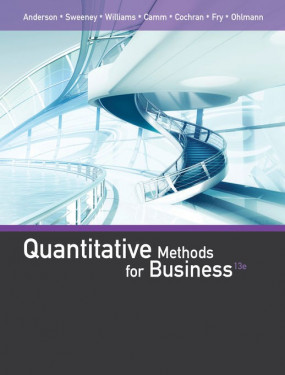Cliff Ragsdale’s new edition of SPREADSHEET MODELING AND DECISION ANALYSIS: A PRACTICAL INTRODUCTION TO BUSINESS ANALYTICS retains the elements and philosophy of past success while now helping your students transition to business analytics. SPREADSHEET MODELING AND DECISION ANALYSIS, 8E’s updates work seamlessly with Microsoft® Office Excel® 2016. This text focuses on developing both algebraic and spreadsheet modeling skills. This edition now features Analytic Solver and XLMiner Platforms with powerful tools for performing optimization, simulation and decision analysis in Excel, as well as complete tools for performing data mining in Excel and techniques for predictive analytics.
*Special prices for countries of South-Asia
- XLMINER PLATFORM OFFERS A COMPLETE SUITE OF TOOLS FOR HANDS-ON EXPERIENCE.
- AUTHOR-CREATED TEACHING RESOURCES ENHANCE CLASS PRESENTATION AND REDUCE PREPARATION.
- UPDATED CONTENT REFLECTS MICROSOFT® OFFICE EXCEL® 2016.
- NEW MINDTAP® DIGITAL LEARNING SOLUTION HELPS YOU ENGAGE TODAY’S STUDENTS.
1. Introduction to Modeling and Decision Analysis
2. Introduction to Optimization and Linear Programming
3. Modeling and Solving LP Problems in a Spreadsheet
4. Sensitivity Analysis and the Simplex Method
5. Network Modeling
6. Integer Linear Programming
7. Goal Programming and Multiple Objective Optimization
8. Nonlinear Programming & Evolutionary Optimization
9. Regression Analysis
10. Data Mining
11. Time Series Forecasting
12. Introduction to Simulation Using Analytic Solver Platform
13. Queuing Theory
14. Decision Analysis
Cliff Ragsdale, Virginia Polytechnic Institute and State University
A recognized innovator in spreadsheet instruction and highly regarded pioneer in business analytics, Dr. Cliff Ragsdale is the Bank of America Professor of Business Information Technology and Academic
Director of the Center for Business Intelligence and Analytics in the Pamplin College of Business at Virginia Tech, where he has taught since 1990. Dr. Ragsdale received his Ph.D. in Management Science and Information Technology from the University of Georgia.












